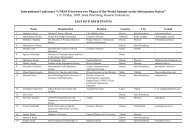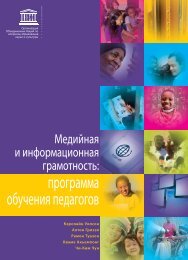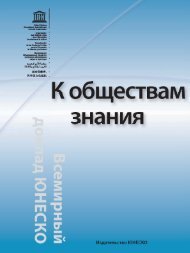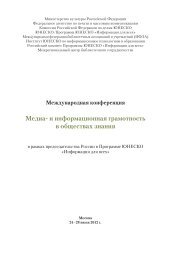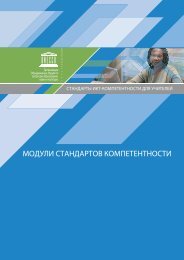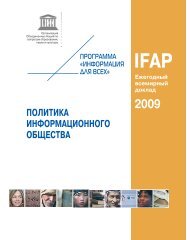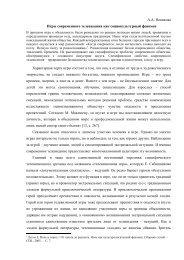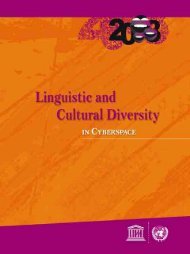Download - РоÑÑийÑкий комиÑÐµÑ ÐÑогÑÐ°Ð¼Ð¼Ñ Ð®ÐÐСÐÐ ...
Download - РоÑÑийÑкий комиÑÐµÑ ÐÑогÑÐ°Ð¼Ð¼Ñ Ð®ÐÐСÐÐ ...
Download - РоÑÑийÑкий комиÑÐµÑ ÐÑогÑÐ°Ð¼Ð¼Ñ Ð®ÐÐСÐÐ ...
You also want an ePaper? Increase the reach of your titles
YUMPU automatically turns print PDFs into web optimized ePapers that Google loves.
international (English)) has been introduced to give equal rights to all languages<br />
in the country. However, English is also used for government notifications and<br />
communications between central (federal) and state (local) governments and<br />
also between local governments. It is often said that there are 1650 dialects<br />
spoken by different communities across the country. The government of India<br />
has recognized 22 languages as constitutionally approved languages. And<br />
there are demands for inclusion of some languages from time to time. The<br />
state governments are free to use their local languages in all domains of life<br />
(i.e. education, official, etc.). In addition to regional language(s) at state level,<br />
there exists good number of tribal languages. State governments are engaged in<br />
promoting and preserving tribal languages and cultures by providing scripts, in<br />
most of the cases, the script of regional languages, and preparing language text<br />
books at primary level. They are also making efforts to prepare dictionaries<br />
from tribal to regional languages. Andhra Pradesh state government could be<br />
named as an example in this regard. A commendable step has been taken by<br />
the Government of India to establish a Central University for tribal languages<br />
in the state of Madhya Pradesh. Some state governments are also seriously<br />
thinking to follow the same suit.<br />
Central Institute of Indian Languages (CIIL) was established in 1969 with the<br />
objective “to assist in and coordinate the development of Indian languages, to<br />
bring about the essential unity of Indian languages through scientific study<br />
and inter-linguistic research and to promote the mutual enrichment of the<br />
languages and thus contribute towards emotional integration of the people<br />
of this country”. Simultaneously regional language centres were also set up<br />
“to take steps for implementing fully in all states the three language formula”<br />
which was expected to protect multilingual character of Indian life. Language<br />
institutes have been established in states for effective implementation of regional<br />
languages. Translation departments are existing in the state administration to<br />
translate central government documents, from Hindi and English to regional<br />
language as well as to translate the state government documents (especially<br />
communication with central government) into Hindi and English.<br />
Apart from departments of regional languages in central and state universities<br />
and other academic institutions, regional language institutions and universities<br />
have come up in many states which concentrate on research, teaching and<br />
publication of materials in respective languages. Central institute of Hindi,<br />
Agra, Maulana Azad National Urdu University (MANU), Hyderabad,<br />
National Council for promotion of Urdu (NCPU) under MHRD, National<br />
Commission for Scientific and Technical Terminology, etc. are working under<br />
the Government of India. There are universities, institutions and departments<br />
at both central and state level to carry out research in Sanskrit language and to<br />
investigate in its rich scientific and cultural heritage.<br />
102




